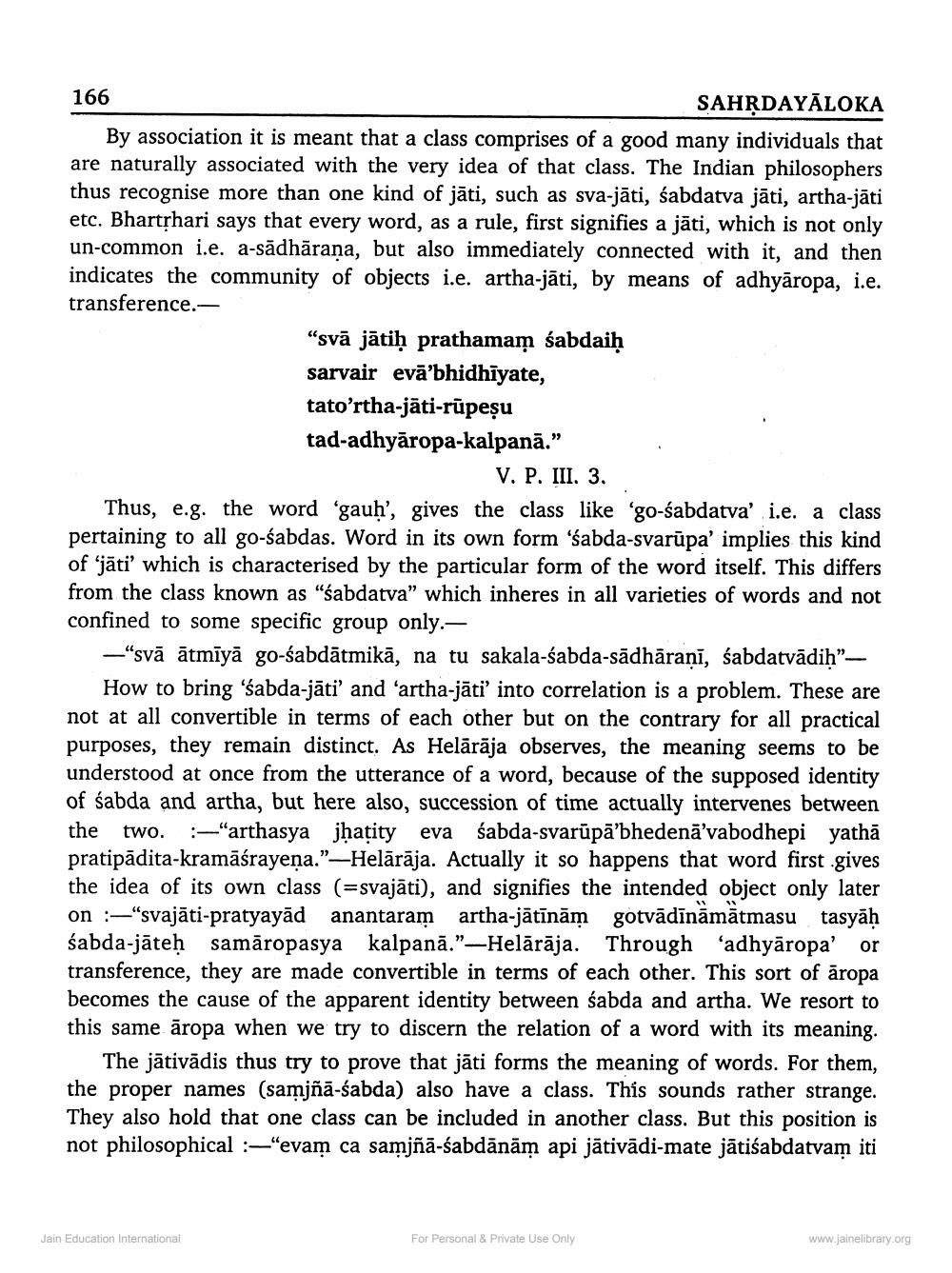________________
166
SAHṚDAYALOKA
By association it is meant that a class comprises of a good many individuals that are naturally associated with the very idea of that class. The Indian philosophers thus recognise more than one kind of jāti, such as sva-jāti, śabdatva jāti, artha-jāti etc. Bhartṛhari says that every word, as a rule, first signifies a jāti, which is not only un-common i.e. a-sādhāraṇa, but also immediately connected with it, and then indicates the community of objects i.e. artha-jāti, by means of adhyāropa, i.e. transference.
"svā jātiḥ prathamam śabdaiḥ sarvair evā'bhidhiyate,
Jain Education International
tato'rtha-jāti-rūpeṣu tad-adhyāropa-kalpanā."
V. P. III. 3.
Thus, e.g. the word 'gauḥ', gives the class like 'go-śabdatva' i.e. a class pertaining to all go-śabdas. Word in its own form 'śabda-svarūpa' implies this kind of 'jāti' which is characterised by the particular form of the word itself. This differs from the class known as "śabdatva" which inheres in all varieties of words and not confined to some specific group only.
-"svā ātmīyā go-śabdātmikā, na tu sakala-śabda-sādhāraṇī, śabdatvādiḥ"
How to bring 'sabda-jāti' and 'artha-jāti' into correlation is a problem. These are not at all convertible in terms of each other but on the contrary for all practical purposes, they remain distinct. As Helārāja observes, the meaning seems to be understood at once from the utterance of a word, because of the supposed identity of sabda and artha, but here also, succession of time actually intervenes between the two. :-"arthasya jhaṭity eva sabda-svarūpā'bhedena'vabodhepi yathā pratipādita-kramāśrayeṇa.”—Helārāja. Actually it so happens that word first gives the idea of its own class (=svajāti), and signifies the intended object only later on :-"svajāti-pratyayād anantaram artha-jātīnām gotvādīnāmātmasu tasyāḥ śabda-jāteḥ samāropasya kalpanā."-Helārāja. Through 'adhyāropa' or transference, they are made convertible in terms of each other. This sort of āropa becomes the cause of the apparent identity between sabda and artha. We resort to this same āropa when we try to discern the relation of a word with its meaning.
The jātivādis thus try to prove that jāti forms the meaning of words. For them, the proper names (samjñā-śabda) also have a class. This sounds rather strange. They also hold that one class can be included in another class. But this position is not philosophical :-"evam ca samjñā-śabdānām api jātivādi-mate jātiśabdatvam iti
For Personal & Private Use Only
www.jainelibrary.org




